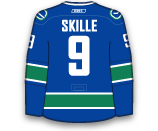Booth was a healthy scratch for the third straight game on Saturday, but will get back in the lineup tonight vs. Los Angeles. In 13 games this season Booth has one goal and two assists. Booth is expected to skate on the fourth line.
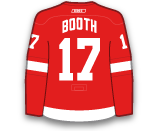
Booth was a healthy scratch for the third straight game on Saturday, but will get back in the lineup tonight vs. Los Angeles. In 13 games this season Booth has one goal and two assists. Booth is expected to skate on the fourth line.

Kevin Shattenkirk appears to be out tonight with the flu, but even if he plays, Colaiacovo makes his season debut regardless. Colaiacovo has had a hard time staying healthy in recent years and he isn't going to carve out a permanent role on a good St. Louis blueline, so he is not fantasy relevant.
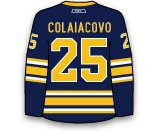
Holland goes from first-line centre to healthy scratch in one game. In four games since coming over from the Ducks, Holland registered one goal on five shots. He will likely cycle in-and-out of the lineup with the Maple Leafs getting healthy.

As you may remember head coach Bruce Boudreau announced at the start of the season that he planned to keep Selanne fresh by sitting him during one game of a back-to-back. Expect Selanne to be back in the lineup on Tuesday.
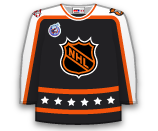
Hossa flew back to Chicago to address a family matter and did not play against the Canucks. It is unknown how long he will be away from the team, so monitor his status on Monday prior to their contest with the Oilers.

Fehr has been scratched in the last nine games after recording one goal and five assists with a minus-5 rating in 14 games. He is expected to skate on a line with Brooks Laich and Troy Brouwer.
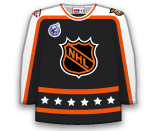
Eray has not recorded a point in the last four games and has just one assist in his last 10 games. Erat has not worked out for the Capitals since acquiring him from the Predators last season.
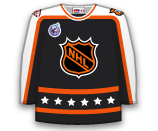
Skinner played 17:56 with two shots in his first game back from an upper-body injury. Skinner skated with Eric Staal for the first time in his career, but he has already been dropped to the third line with rookie Elias Lindholm and veteran Radek Dvorak for this afternoon's contest.

Jones was recalled on Thursday after the Flames traded Tim Jackman to the Ducks, opening up a roster spot for Jones. He leads the Abbotsford Heat with a eight goals and 20 points in 16 games. Tonight he is expected to skate on the Flames fourth line with Mikael Backlund and Brian McGrattan.

Nelson goes from the first line to a healthy scratch in an instant with Thomas Vanek returning from a lower-body injury and Michael Grabner getting back in the lineup. "Brock has played extremely well and the other guys have seen that. You have to make tough decisions," Islanders head coach Jack Capuano said.

Grabner was a healthy scratch against the Maple Leafs on Tuesday, but will return to the lineup tonight against the Penguins. Grabner has not registered a point and has a minus-4 rating in his last 11 games.
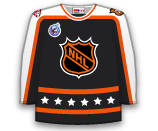
Mattias Tedenby will enter the lineup in Brunner's place tonight vs. Los Angeles. Brunner has failed to record a point in the last 10 games. He had seven points in the first 10 contests but has cooled off considerably. The entire New Jersey offence has struggled and ranks 25th in scoring.
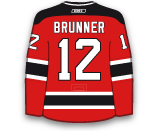
Tedenby has been a healthy scratch in the last three Devils contests. He has one goal and a minus-3 rating in nine games. He is not fantasy relevant.
The Sabres tried to send Grigorenko to the AHL on a conditioning stint on Tuesday but it was denied by the NHL. With Grigorenko returning to Buffalo yesterday, he will be in the lineup tonight. The 19-year-old has struggled with just two goals and one assist in 15 games.
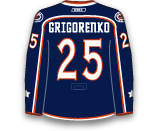
Falk suited up for Del Zotto in three straight games but will swap out tonight. He averaged 12:19 in those three contests with no points and a minus-1 rating.
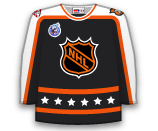
Del Zotto was a healthy scratch for the last three games but will rejoin the lineup tonight. The 23-year-old former 20th overall pick (2008) has had a disappointing start to the season after scoring 41 points in 2011-12 and was on pace for 36 over an 82 game season last year. He has been the talk of potential trades, but for now he is still a Ranger and will look to stay in the lineup with a strong game tonight.

With Dennis Seidenberg (lower-body) not skating this morning, it appears as if Miller will be in the lineup tonight after being an emergency call-up from Providence (AHL) on Wednesday. Miller is in his fourth season with the Providence Bruins, he has one goal and two assists in 12 games.
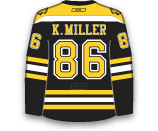
Zucker was recalled this morning and will get in the lineup for his second game of the season. Zucker is a fan favorite in Minnesota, so Wild fans should be excited to see him skate on the second line. The move forces, Nino Niederreiter down to the third line and Justin Fontaine to the fourth. Torrey Mitchell who appeared to be injured last night will be scratched.

Dumba was a healthy scratch last night vs. Ottawa, but he returns tonight in place of Nate Prosser. The rookie defenseman did not record a point in 11:41 TOI in his last outing on Sunday.

Brandon Dubinsky (foot) is out tonight, so Skille will get the call. Skille has has appeared in one game for the Blue Jackets this season. In six games with Springfield he tallied two goals and a single assist. He is not fantasy relevant, having scored just 20 goals and 49 points in 179 career NHL games.
